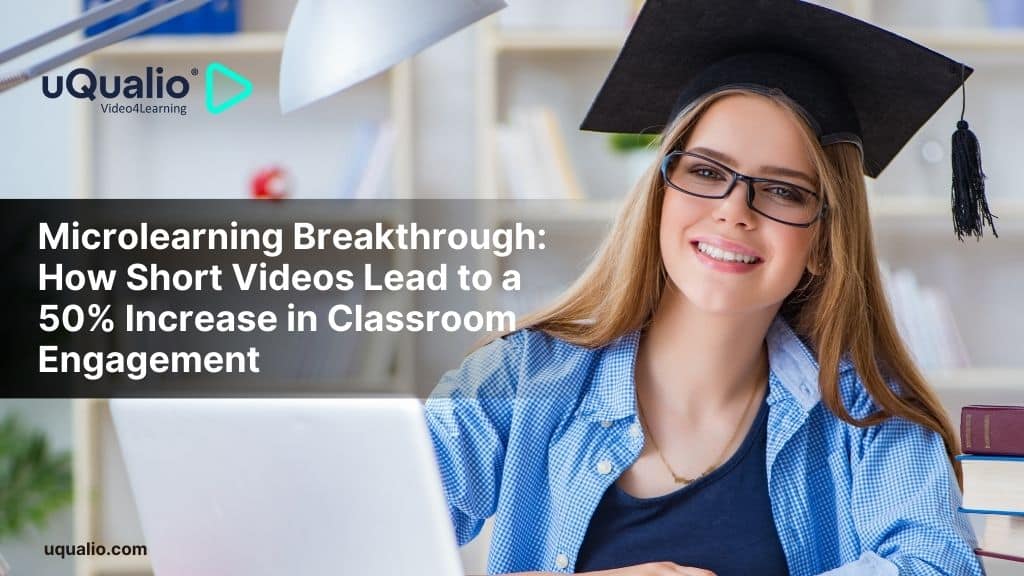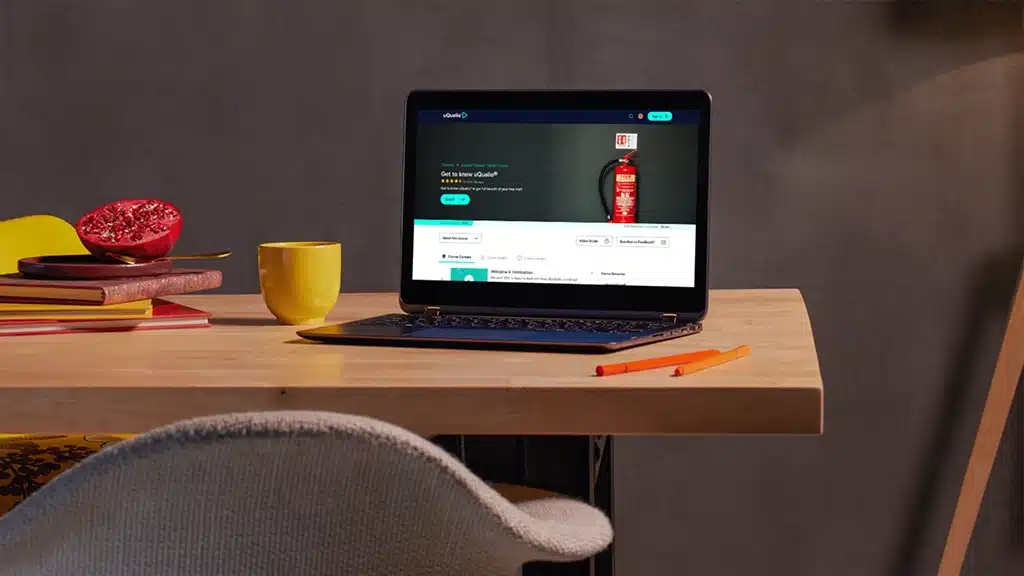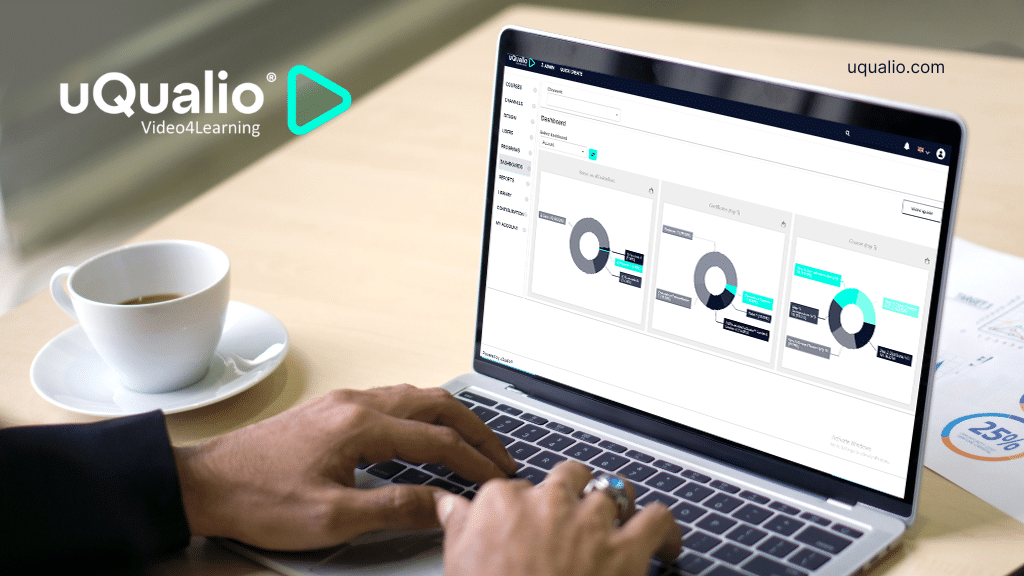
uQualio®, the makers of your favorite video eLearning authoring & creation software platform, recently had the opportunity to sit down and chat with Liz Hardy, an EdTech specialist and the author of The Real Word Guide to Online Teaching.
We have an exciting interview planned with Liz today, so let’s jump in!
Hi Liz and thank you for taking the time to chat with uQualio® blog readers today. Why don’t you get things started by introducing yourself to our audience?
My pleasure. I’m Liz Hardy, and I’ve been teaching online for over 10 years. In that time, I’ve helped over 6,000 online learners to improve their skills and qualifications and achieve their professional goals. It’s really exciting to help my students access all the advantages of learning online!
Your credentials are quite impressive. You have a Ph.D. in English together with several other postgraduate diplomas and qualifications. What was your main motivation for deciding to teach online? What pushed you to ditch the physical workplace for a digital office?
Thank you! I love working online because it’s so much more efficient and flexible. I can get much more done in less time. The key is a good organization and careful communication. To communicate effectively in an online environment, you have to be very clear and make sure your message will be understood quickly and accurately without the usual visual cues of face-to-face communication.
And if you know how to do that, you can make sure that you’re still connected to colleagues and learners.
And by working in a digital office, I get more time to connect with my learners and make sure I get their assignments back on time! It also means I get more variety professionally – I currently work for two different educational organizations, and I couldn’t do that if I had to be physically present on campus.
I’ve read that your passion is to help people develop skills that can apply to real-world contexts. This vision led you to create SimpliTeach – a website where you share ideas on how teachers can work smarter. Can you tell us more about SimpliTeach and how it began? How difficult was it to get the site started? What were some of the challenges that you faced early on as an online educator?
I knew I had a lot of useful information for both online teachers and learners and it seemed the most efficient way to get it out there. I’ve actually taught courses on writing for the web, so I know how to write for this medium and make sure the information is reader-friendly and engaging.
It wasn’t difficult to get the site started; it was just a matter of writing some of the millions of ideas I have and mastering the technology. I’m constantly upskilling, so this is pretty normal for me; you just have to roll up your sleeves and get it done.
Early challenges as an online educator mostly to do with feeling overwhelmed. As with anything new, it takes a while to find your feet and become confident that you’re doing an excellent job. (That’s why I wrote some e-books about how to learn the ropes fast, for new educators.)
When you first launched SimpliTeach, how did you go about onboarding your first customers? What onboarding strategy was the most crucial in its early days?
The goal has always been to create good content and get it in front of people.
I also publish on eLearning Industry and other education blogs, and I also use Twitter to connect with educators interested in online teaching (I have about 34,000 followers so far); there are some great people out there in the social media world.
You have a lot of content available on SimpliTeach. Besides offering free blueprints and templates to online teachers, you also have several e-books that they can access on the site. How much effort went into preparing all this digital content?
An enormous amount! I put a lot of effort into my content; my target audience is very busy and doesn’t have time to waste on material that won’t help them. So I have to make sure that my content is practical, immediately applicable, and very, very helpful.
There are also many “how-to” content, tips, and guides that are readily accessible for online teachers on your blog. For instance, your post about “6 Online Teaching Lessons from Albert Einstein” is quite catchy and interesting to read. I also saw that you’re quite active on Twitter. How important have these two channels been in helping you reach out to your intended audience?
These are the two channels that mostly get the message out there. Most of the how-to articles are on the blog, and Twitter is great for sharing ideas with other online educators who are looking for new and better ways of doing things. I’ve been surprised at how it’s possible to make meaningful connections and offer useful information on Twitter, even when you only have a sentence or two’s worth of space available to you. It can be done if you’re careful with your words!
As an expert in adult education, you are aware of the challenges that adult learners face regularly. “A lack of time” is probably one of the most common reasons you hear from your students. How do you convince these people that e-learning is better for them than the traditional way of learning?
Most of my learners quickly see that the courses I teach are directly relevant to their jobs.
My online learners get personalized feedback and regular encouragement that refines their skills and keeps them moving forward through their courses. I’m very aware of their challenges and obstacles, and I do everything I can to try and help them to achieve their goals.
Another obstacle that I can think of is that adult learners, being more established in life, can be more resistant to change. Their maturity and life experiences they’ve had can lead many to be hesitant in accepting new ideas. Is there any truth in this, and if so, what advice do you give these individuals to overcome such hurdles?
Yes, for sure. This is especially the case with adult learners who have been working in a role for many years and now need to prove their skills with a formal qualification. They can often resent having to do a formal study on top of their workload.
I try to be as encouraging and respectful as possible and offer them the chance to demonstrate and build on their existing skills and knowledge in assessments. I find that if they give it a chance, they’re often surprised that they can fine-tune some of their existing skills – and it’s a real confidence booster to finally have that formal qualification that many modern workplaces demand.
You mentioned that you had a couple of depressing years as “cannon fodder” in your previous working environment. If you were to go back in time, would you choose to skip this altogether and start your e-learning journey earlier? What three things would you change in your past life and why?
That’s an interesting question! All my experiences have been valuable because they’ve pointed me in this direction. If I could go back in time, I would move into e-learning much more quickly, get clearer on my skillset and what I have to offer, and be more assertive about seeking opportunities.
And I would follow some sage advice I found online a few years ago about how to focus on what you want and go for it:
- One thing at a time.
- First things first.
- Start now!
Thanks so much for your thoughtful questions.
Our pleasure Liz! Thank you for being here with us today.
To our blog audience, if you’d like to learn more about Liz check out her website over at SimpliTeach .
Achieve Effective & Affordable Video Training
– uQualio is an award-winning, easy-to-use, all-in-one NextGen LMS software for any types of online video training.











